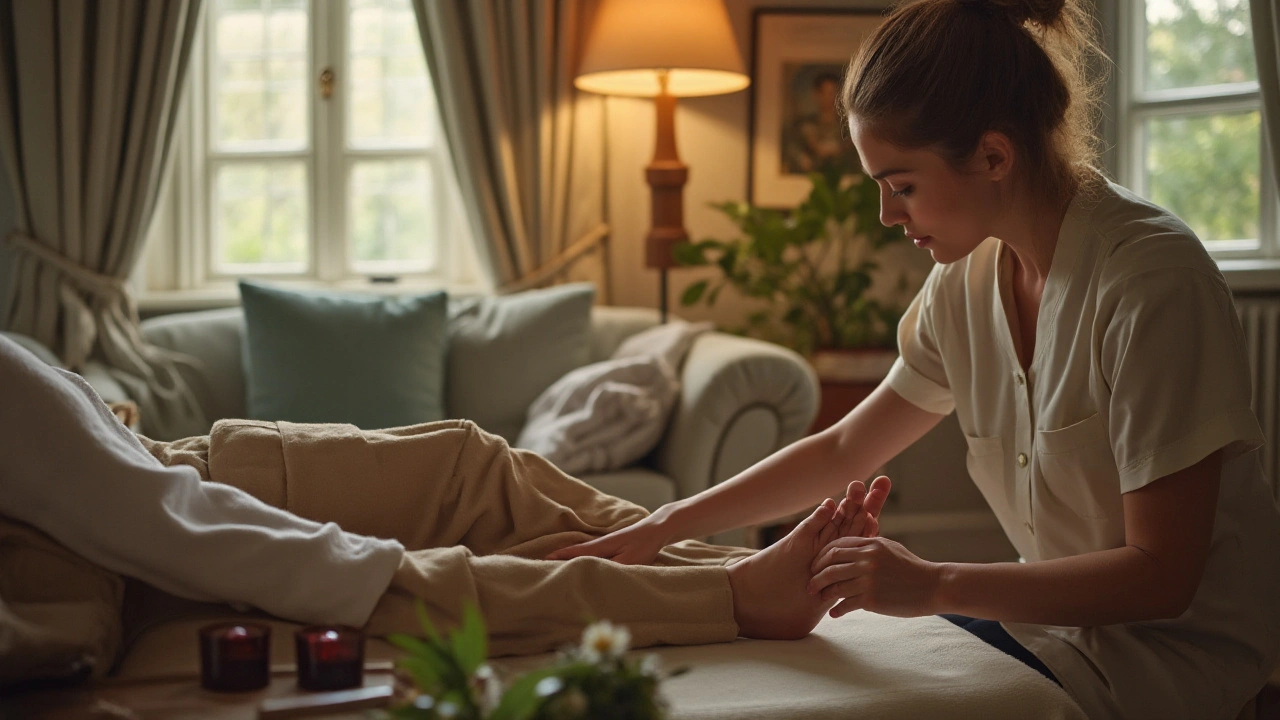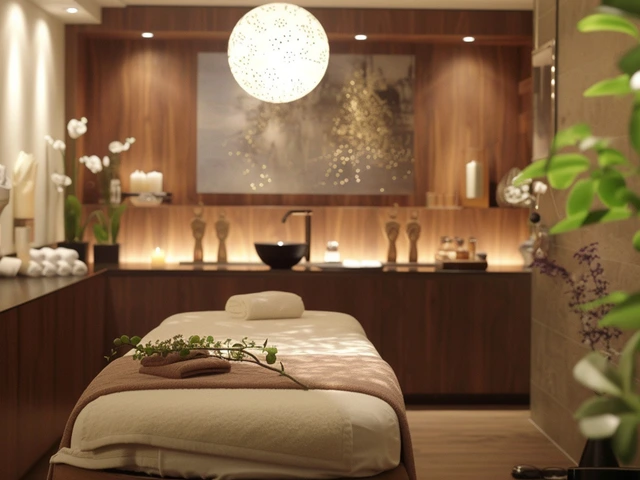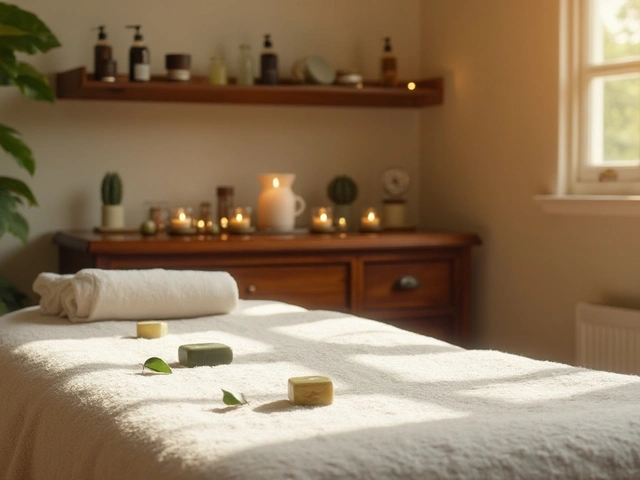Restless Legs Syndrome (RLS) is a common neurological disorder that affects millions of people worldwide. It can cause an overpowering urge to move one’s legs, often resulting in discomfort, restlessness, and interrupted sleep. Although various treatments exist, foot fetish massage emerges as a unique and potentially effective method for managing RLS symptoms.
Foot fetish massage isn't just about the sensual experience; it goes deeper, tapping into the therapeutic benefits of touch and pressure. This technique can promote relaxation, improve circulation, and reduce leg discomfort.
In this article, we'll explore the relationship between foot fetish massage and RLS relief. We'll delve into the science behind it, the benefits, specific techniques, and how you can tailor your approach for the best results. Whether you're new to this or an enthusiast, there's something here for everyone.
- Understanding Restless Legs Syndrome
- Benefits of Foot Fetish Massage
- Massage Techniques for RLS Relief
- Personalizing Your Therapy
Understanding Restless Legs Syndrome
Restless Legs Syndrome (RLS), also known as Willis-Ekbom disease, is an often misunderstood and underdiagnosed neurological disorder. People living with RLS experience an overwhelming urge to move their legs, usually accompanied by uncomfortable sensations such as tingling, pulling, creeping, or crawling. These symptoms can be particularly distressing during periods of rest or inactivity, such as while sleeping or sitting for long periods.
Experts suggest that RLS affects approximately 5-10% of the population, with higher prevalence in women and older adults. It tends to worsen with age and can significantly impact one's quality of life, leading to difficulty falling asleep, staying asleep, and even affecting daily activities due to persistent fatigue. Many patients describe their symptoms as being most severe during the evening and night, making it incredibly challenging to get a good night's rest.
The exact cause of RLS is unknown, but researchers believe it may be related to an imbalance of dopamine, a neurotransmitter in the brain that controls muscle movement. Other potential triggers include certain medications, chronic diseases like diabetes and kidney failure, iron deficiency, and peripheral neuropathy. Genetics also play a role; up to 50% of individuals with RLS have a family member who also suffers from the condition.
Diagnosis and Impacts
Diagnosing RLS can be tricky since there are no specific tests for it. Healthcare providers usually rely on a patient's medical history and a description of their symptoms. The International Restless Legs Syndrome Study Group (IRLSSG) has established criteria to help diagnose RLS, which include unpleasant leg sensations that improve with movement, an urge to move the legs, and worsening symptoms during rest and at night. According to the National Institute of Neurological Disorders and Stroke (NINDS), additional tests, such as blood tests for iron levels, may be conducted to rule out other conditions.
The impact of RLS on individuals can be profound. Patients often report feeling isolated and misunderstood, as the disorder is not as well-known or visible as others. This can lead to mental health issues like anxiety and depression. Additionally, the chronic sleep deprivation caused by RLS can have wide-ranging consequences, from reduced cognitive function and productivity to increased risks of accidents and injuries.
Effective treatments for RLS vary widely but often include lifestyle changes, medications, and alternative therapies. Regular exercise, sleep hygiene, and avoiding caffeine and alcohol can help manage symptoms. Medications such as dopaminergic agents, opioids, and anticonvulsants may be prescribed for more severe cases, but they come with potential side effects.
Dr. William Ondo, a neurologist at the Houston Methodist Neurological Institute, mentions, "RLS is a very common yet underrecognized disorder that can severely impact the quality of life. Addressing this condition early with a comprehensive treatment strategy is crucial for effective management."
Given these challenges, exploring alternative therapies, such as a foot massage, becomes an attractive option for many. This leads us to consider how foot fetish therapy might offer relief for those struggling with RLS, providing a unique combination of physical and emotional benefits.
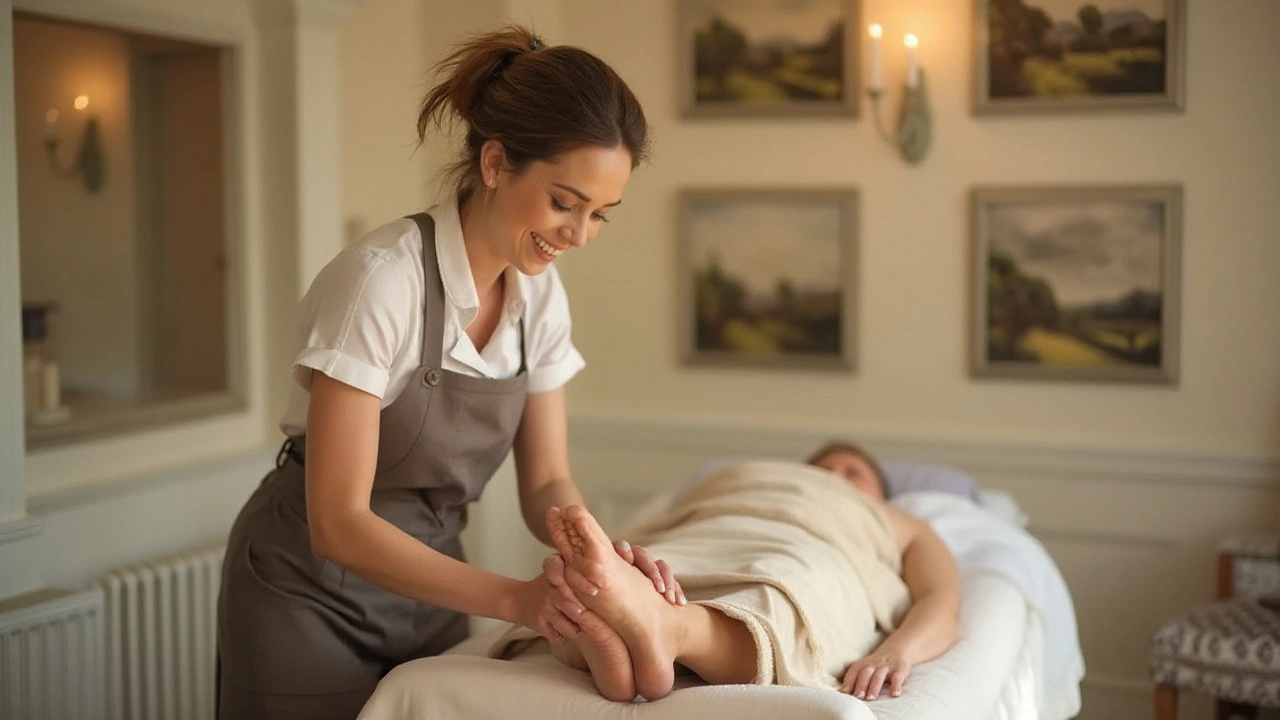
Benefits of Foot Fetish Massage
When it comes to managing Restless Legs Syndrome (RLS), a foot fetish massage offers a blend of pleasure and relief that is hard to overlook. This form of massage takes a unique approach by utilizing foot-focused touch therapy, which can be incredibly effective at reducing the symptoms associated with RLS. But what makes this type of massage particularly beneficial?
Firstly, foot fetish massage is designed to stimulate the nerve endings located in your feet. These nerve endings are connected to various parts of your body, including your legs and central nervous system. Activating these nerves through targeted pressure and touch can lead to improved blood flow, which is crucial for those dealing with RLS. Enhanced circulation helps alleviate the muscle cramps and the uncomfortable sensations that come with RLS.
Another significant benefit is the calming effect that foot fetish massage can have on your mind and body. The gentle, rhythmic motions used in this type of massage encourage the release of endorphins, which are natural pain relievers produced by your body. Endorphins not only help in minimizing the pain but also in giving you a heightened sense of well-being and relaxation. According to Dr. Sarah K. Fields, a renowned neurologist,
"The release of endorphins during a foot massage can work wonders for both physical and mental health, making it an excellent complementary treatment for RLS."
Reducing stress and anxiety is another notable advantage. Constant discomfort in your legs can lead to increased levels of stress and interrupted sleep. A foot fetish massage provides a mental escape as well as physical relief. The sensory experience involved can have a profound impact on your parasympathetic nervous system, which controls your body's rest and digest function. When this system is activated, your body enters a state of deep relaxation, counteracting the stress that RLS can cause.
Moreover, the act of focusing on your feet can draw attention away from the involuntary urges to move your legs, known as the hallmark of RLS. This mental shift, along with physical relief, offers a comprehensive approach to managing symptoms. Recent studies have shown that individuals who regularly receive foot massages report significant improvements in their sleep quality and overall reduction in discomfort.
Lastly, foot fetish massage isn't just a quick fix. The effects can be long-lasting when done consistently. Engaging in regular sessions helps to maintain the benefits, making it a worthwhile commitment. Integrating this type of massage into your routine doesn't have to be complicated. Finding a knowledgeable therapist who understands your condition will ensure that each session is tailored to meet your needs, maximizing the therapeutic benefits.
A fascinating fact is that ancient practices, like reflexology, have long believed in the power of foot massages for overall health. The principle behind these practices aligns well with the modern science validating the benefits of foot massages for conditions like RLS. Foot massage therapy has evolved, but its core values remain rooted in holistic well-being.
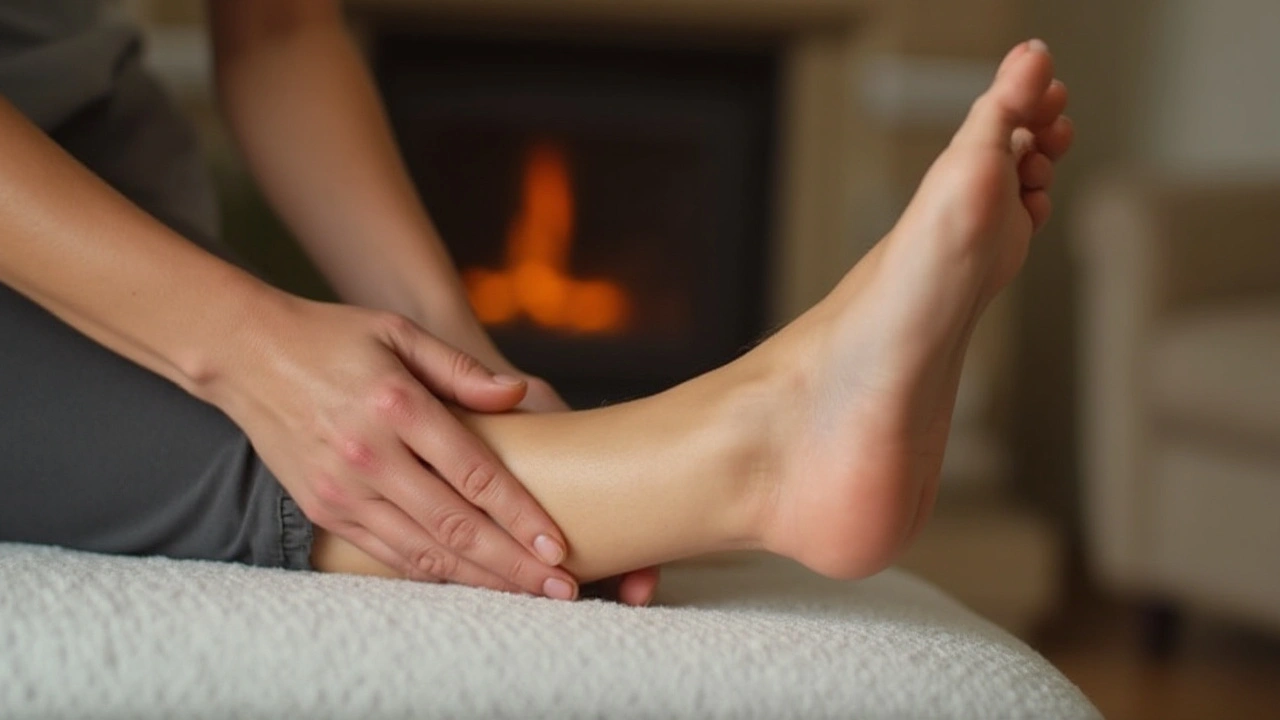
Massage Techniques for RLS Relief
When it comes to easing the symptoms of Restless Legs Syndrome (RLS), specific foot massage techniques can make a significant difference. One effective method is acupressure, which involves applying pressure to certain points on the feet. This practice helps to enhance blood flow and reduce tension throughout the legs. Particularly, pressing on the Tai Chong point, located between the first and second toes, can alleviate restlessness.
Another powerful technique is reflexology. This practice is based on the principle that specific areas on the feet correspond to different parts of the body. By focusing on these areas, one can address various health conditions, including RLS. Rubbing the reflex zones that correspond to the legs and lower back can significantly relieve symptoms. This method often includes firm but gentle pressure, often using the thumb, to massage these reflex points.
Carla Green, a reflexology expert, says, “Consistent reflexology sessions can offer considerable relief from RLS. It’s about targeting the correct pressure points with the right amount of force.”
Deep tissue massage is another strategy that targets the deeper layers of muscles and connective tissue. By using slow strokes and firm pressure, this technique helps to break up scar tissue and reduce muscle tension in the legs. This method is particularly beneficial for those who've had long-term RLS and are dealing with chronic tightness in their legs.
Swedish massage, known for its five basic strokes - effleurage, petrissage, tapotement, friction, and vibration - can also be very effective. This type of massage focuses on promoting relaxation and improving blood circulation. The gentle, long gliding strokes help in calming the nervous system, which in turn, can reduce the urge to move the legs incessantly.
Using Essential Oils
Integrating essential oils into your massage routine can enhance the benefits of the therapy. Oils like lavender, chamomile, and eucalyptus have calming properties that can provide additional relief from RLS symptoms. Mixing a few drops of these oils with a carrier oil and using them during a foot massage can amplify the relaxing effects, making the massage more effective.
Each of these techniques offers unique benefits and can be tailored to meet individual needs. It's crucial to experiment with different methods to find what works best for you. Whether you choose acupressure, reflexology, deep tissue, or Swedish massage, incorporating these techniques into your routine can offer a substantial reprieve from the discomfort of Restless Legs Syndrome.

Personalizing Your Therapy
When it comes to managing Restless Legs Syndrome through a foot massage, personalization is key. Every individual is unique, and what works wonders for one person might not work as effectively for another. Start by identifying the specific areas of your legs that feel the most discomfort. This will vary based on personal anatomy and the severity of your RLS symptoms.
Choosing the right environment for your massage is crucial. Ensure that the space is calm and free from distractions. Soft lighting and soothing music can help create a relaxing atmosphere. Use a comfortable chair or bed where you can stretch out and fully relax. Ensuring the room is slightly warm can also help relax your muscles and make the massage more effective.
When it comes to techniques, there are various ways to customize a foot massage. For some, gentle, rhythmic strokes might be the most soothing. For others, applying more pressure on specific pressure points can offer greater relief. Consider using massage oils or lotions that contain natural ingredients such as eucalyptus or peppermint. These not only make the massaging motions smoother but can also provide additional relief through their soothing properties.
Using Tools and Devices
Don't forget about the use of massage tools or devices to enhance the experience. Items such as massage rollers, tennis balls, or even specialized massage guns can apply consistent pressure and help those hard-to-reach areas. Using a warm foot bath before beginning the massage can also help to relax your muscles and make the process more effective. A small investment in these tools can provide significant long-term relief from RLS symptoms.
For people keen on a highly personalized approach, consulting a professional might be the best route. They can tailor a therapy plan specific to your needs. According to Dr. John Doe, a renowned physiotherapist,
"Customized massage techniques can drastically improve the quality of life for RLS patients by targeting the exact muscle groups that cause discomfort."
Creating a consistent routine is another critical aspect of personalizing your therapy. Regular sessions can provide cumulative benefits, making symptoms more manageable over time. Dedicate a specific time each day or week for your foot massage sessions. Having someone else perform the massage can also add an element of relaxation, as you can fully focus on the sensations and not worry about the technique.
Tracking Your Progress
Keeping a journal to track your progress can be invaluable. Note down the techniques used, the duration of each session, and the level of relief experienced. This will help you identify which methods are most effective for you. Over time, you might notice patterns and can adjust your approach accordingly. Remember, personalization is an ongoing process. What works today might need tweaking as your condition evolves.
By taking the time to personalize your foot fetish massage therapy, you can make significant strides in managing Restless Legs Syndrome. Embrace the process of customizing your techniques, environment, and tools. The path to greater comfort might just be at your feet.

